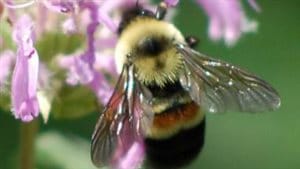your hosts this week, Carmel and Marc.
Listen
It’s a world first. Several Ontario hospitals will participate in clinical trials of a new cancer therapy involving viruses.
Two viruses will be used in a one-two punch to attack cancer cells.
One is the Maraba virus, isolated from Brazilian sandflies. This has been genetically modifed by Ottawa labs to sense the difference between tumour and non-tumour cells and attack the cancer with the help of the body’s immune system.
Another virus,-Adenovirus- then acts as an amplifier to the attack on the tumour. Terry spoke with Dr John Bell of the Ottawa hospital.
=

After years of speeding through space, the “New Horizons” space probe reached the far end of the solar system this week.
It flew past Pluto and took some amazing photos which are revealing entirely new information of the “dwarf” planet.
Carmel spoke with Loic Quesnel, a host and creator of programmes at Montreal’s Rio Tinto-Alcan Planterium where they’ve just premiered a new production called “Photo-Chronicles of an ex-planet”
=

For the past few years there has been much talk about how neonicotinoid insecticides on farms have been harming and killing honey bees.
Scientists have said this is surely having an equally negative effect on wild bees, like the bumble bee.
Recently a study of why the once ubiquitous bumble bee was dissapperaing from the southern edge of its range, found that while insecticides and habitat loss were definitely factors, global warming was making it just too hot and was changing ecosystems at the southern edge of the range.
At the same time, the bumble bees, unlike many other plants, bird, fish, and insect, were not moving northward to extend their ranges as the previously too cold north, warmed up.
Marc spoke to professor Laurence Packer a renowned bee expert at York University about the decreasing range of bumble bees.







For reasons beyond our control, and for an undetermined period of time, our comment section is now closed. However, our social networks remain open to your contributions.